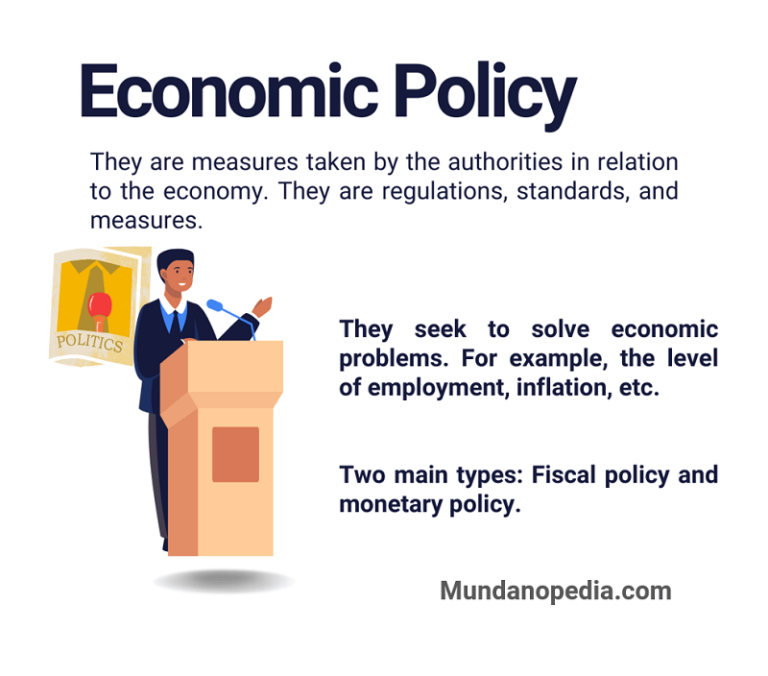Economic Policy: Definition, Goals, Types and Examples

Economic policy
Economic policies are measures taken by the authorities in relation to the economy. Economic policies are shown as regulations, rules, and measures taken by economic agents, especially in the macroeconomic aspect, as is the case of governments.
It is the application or materialization of economic theories once it’s been determined what will give the best result for economic well-being. Oxford Dictionary defines policy as “The set of controls used by the government to regulate economic activity” (1)
Cambridge Dictionary defines policy as “a set of ideas or a plan of what to do in particular situations that has been agreed to officially by a group of people, a business organization, a government, or a political party.” (2)
Contents
Goals of economic policies
The central objective of economic policies is the development of guidelines to apply economic science and thus solve the problems of the distribution of scarce resources in society.
These problems are solved through different measures that complement each other, since due to their complexity, economic problems can’t be attacked in isolation. For example, when the government proposes certain fiscal, credit policies, antitrust law, etc.
The most common economic policies are those that pursue the following goals:
A high level of employment: The solution may be a necessary stimulus for an increase in production.
Price stability: It’s the creation of rules or laws that allow security for both production and consumers.
Fair and equitable distribution of national income.
Maintain or increase the gross domestic product. Which is achieved through a good production process.
Economic development: Improves the quality of life of the inhabitants of a nation and corrects market errors.
Types of economic policies
- Monetary policies. They are measures aimed at guaranteeing the value of the currency and its appropriate liquidity, some examples are the modification of the legal reserve of commercial banks and the issuance of currency or money supply.
- Fiscal policies. They are the polices that focus on the government, its resources and their management, and it includes public spending and taxes.
The most applied economic policies
The most applied economic policies today are aimed at solving the following problems:
- Achieve price stability: It consists of achieving a balanced and appropriate price for both producers and consumers.
- Improve net in the effectiveness of the production process to achieve GDP growth.
- Economic development. Economic development makes it possible to improve living standards, correcting errors in the system and reinforcing what is already being done well.
- Fair and equitable distribution of national income. This is about the national income, being managed so that development can be achieved for all sectors of the economy and social classes.
- Improvement of employment levels. Its purpose is to guarantee income to citizens and that they can satisfy not only their basic needs. But also those such as recreation, achieving social stability and also an increase in demand, which creates an increase in production, and in turn having more production creates more employment opportunities.
See also